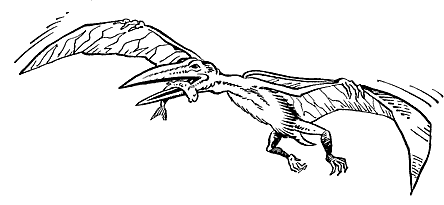sauro-, saur-, -saurus, -saurid, -saur,
-sauria, -saurian +
(Greek: lizard, reptile, serpent; used especially with reference to "dinosaurs")
Shantungosaurus
“Shantung (or Shangdong) lizard” from Late Cretaceous Shangtung (Shangdong) Province, China. Named by Hu Chengzi (Hu Chengchih) in 1973.
Shanyangosaurus
“Shanyung lizard” from Late Cretaceous China. Its name comes from Chinese Shanyang (shan, “mountain” plus yang, “south [of]” or “south of the mountain”. Named by Xue, Yihong Zhang, and Bi in 1996.
Shatungosaurus
A “Shandong lizard” from Late Cretaceous China. It was named by paleontologist Hu Chengzi (Hu Chengchih) in 1973.
Shonisaurus
An Ichthyosaur that lived during Late Triassic North America. It was not a dinosaur but another kind of extinct reptile.
Shunosaurus
“Sichuan lizard” from Middle Jurissac China. Its name is based on Shu, an old name for the Sichuan region of China. Named by Chinese paleontologists Zhiming Dong, Shiwu Zhou, and Yihong Zhang in 1983.
Shuosaurus
“Shu lizard” was dug up in Szechuan, China in 1979. Shu was the name of an old Chinese kingdom. It is estimated to have come from the Early-Middle Jurassic period.
Shuvosaurus
“Shuvo’s lizard” from Late Triassic Texas. Its name was made to honor Sankar Chatterjee’s son, Shuvo, the one who discovered the toothless type skull during preparation of material from the Dockum Formation, Texas. Named by Indian paleontologist Sankar Chatterjee in 1993.
Siamosaurus
A “Siamese lizard” from Early Cretaceous Thailand. Its name is based on “Siam”, an old name for Thailand where the fossil was found. Named by French paleontologist Eric (Erik) Buffetaut and Rucha Ingavat in 1986.
Sigilmassasaurus
A “Sijilmassa lizard” from Middle Cretaceous Morocco. Its name is based on “Sigilmassa”, now “Sijilmassa”; an ancient city, once known for its wealth and power, now in ruins in the Tafilalt oasis region in southern Morocco where the fossil was discovered. Named by Canadian paleontologist Dr. Dale Alan Russell in 1996.
Siluosaurus
A “silk-road lizard” from Early Cretaceous China. Its name comes from Clhinese Silu, “silk road”, the ancient trade route through China and Central Asia that carried Chinese silk and other goods to the Middle East and Europe. A 1992 Sino-Japanese Silk Road Expedition found the fossil as they were following the old Silk Road to Central Asia. Named by Chinese paleontologist Zhiming Dong in 1997.
Silvisaurus
A “forest lizard” from Late Cretaceous Kansas, USA. Named by paleontologist J. G. Eaton in 1960.
Sinopliosaurus
A Chinese pliosaur (“more lizard”) from Late Jurassic Weiyuan, Sichuan Province, China. Named by Chinese paleontologist Yang Zhong-jian (also known as: Chung Chien Young) in 1944.
Sinornithosaurus millenii
A "bird-like lizard" or "Chinese bird-like lizard" from a probable Early Cretaceous northeast China; and also from a Mesozoic fish-dinosaur-bird locality in the Yixian Formation of China.

Could this be what an an early dinosaur bird looked like?
The species name comes from "Millennium", in reference to the specimen's discovery near the end of the twentieth century. Information comes from Nature, 401, September 16, 1999, pp. 262-266.
It was Named by Chinese paleontologist Xing Xu, Xiao-Lin Wang, and Xiao-Chun Wu in 1999.

Sinosauropteryx
A “Chinese dinosaur wing” from Early Cretaceous China. Its name is based on Greek “sinai” and Latin “sinae”, an oriental people, Chinese. This fossil was found in ancient lake sediments in Liaoning Province, northeastern China. Named by Chinese geologists Ji Qiang and Ji Shu’an in 1996.
Sinosaurus
A “Chinese (eastern) lizard” from Late Triassic or Early Jurassic Yunan, southern China. Named by Chinese paleontologist Yang Zhong-jian (also known as: Chung ChienYoung) in 1948.


